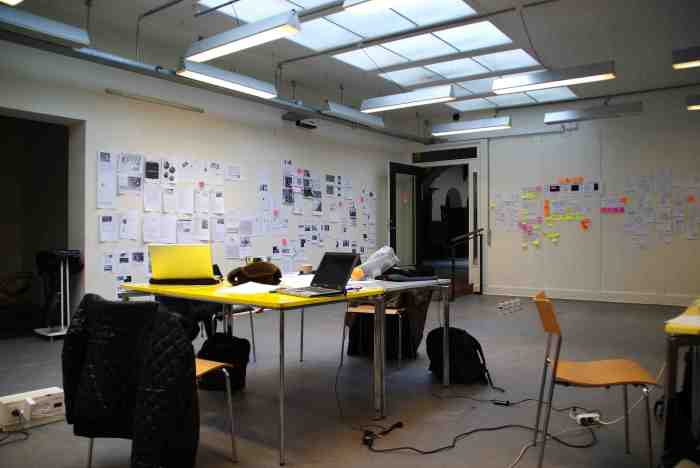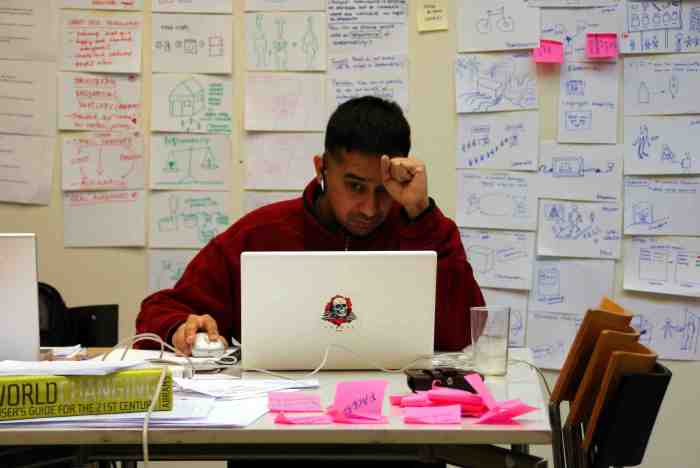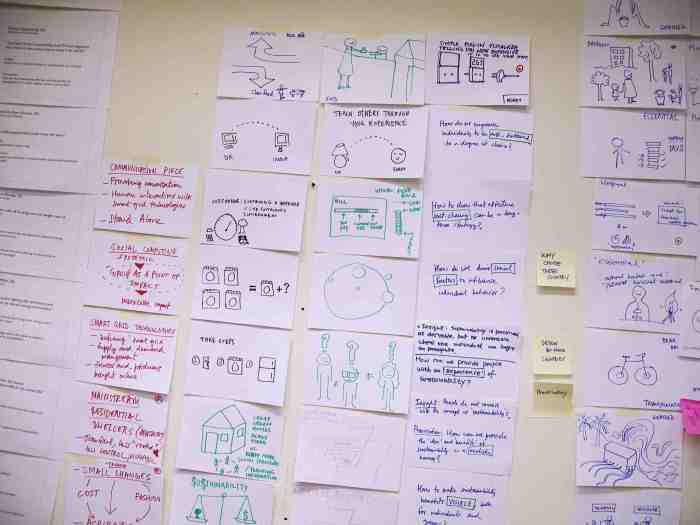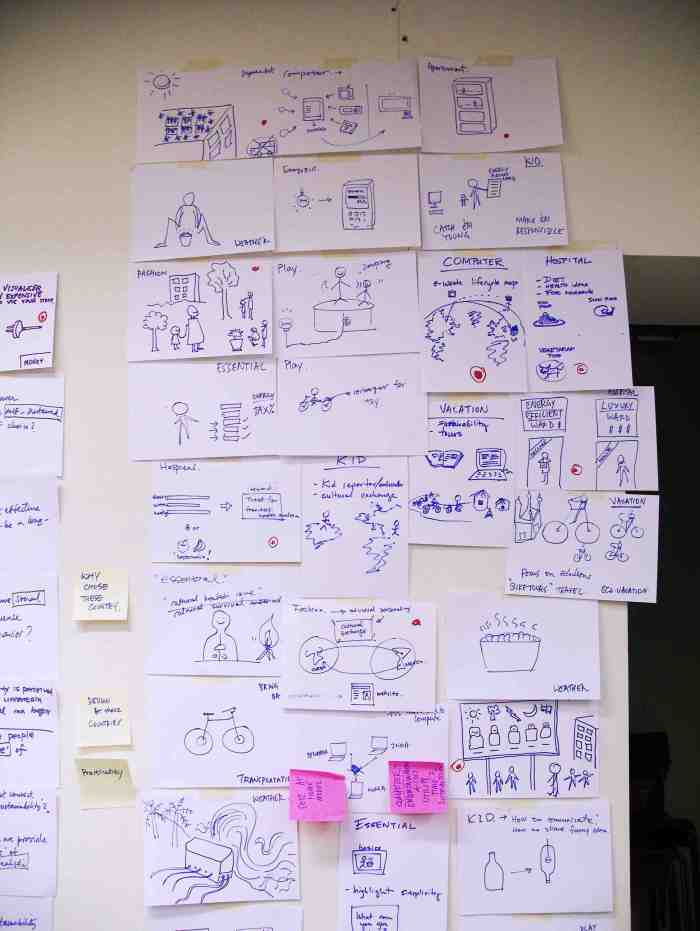Post Last / Thanks for watching
Since completing his Masters education in Interaction Design from the Copenhagen Institute of Interaction Design (CIID) in Sep 2008, Ash has discontinued the use of this blog to chronicle his work. So, he wishes a very warm good bye and see-ya-around to anyone who might still stumble on this lovely ol’ webpage as it is slowly relegated to the dusty attics of cyberspace.
As for Ash, he has since left the cushy confines of design school to return to the grime and grit of interaction design practice in the trenches of the world’s leading technology corporates … it is rumored that he has another blog in the works, but like they say: you never know with these things.
Ash’s Final Project overview at CIID (which was in full throttle at the time of the last post on this blog) can be found here.
Ash’s profile at CIID can be found here.
Ciao!
Exploring ‘information foraging’
Information foraging theory has been central to my thesis effort here at CIID. Here’s a nice explanation about it from the wikipedia page:
“Information foraging” is a theory that applies the ideas from optimal foraging theory to understand how human users search for information. The theory is based on the assumption that, when searching for information, humans use “built-in” foraging mechanisms that evolved to help our animal ancestors find food.
“Informavores” constantly make decisions on what kind of information to look for, whether to stay at the current site to try to find additional information or whether they should move on to another site, which path or link to follow to the next information site, and when to finally stop the search. Although human cognition is not a result of evolutionary pressure to improve Web use, survival-related traits to respond quickly on partial information and reduce energy expenditures force them to optimise their searching behaviour and, simultaneously, to minimize the thinking required.
Information Scent
The most important concept in the information foraging theory is “information scent“. As animals rely on scents to indicate the chances of finding prey in current area and guide them to other promising patches, so do humans rely on various cues in the information environment to get similar answers. Human users estimate how much useful information they are likely to get on a given path, and after seeking information compare the actual outcome with their predictions. When the information scent stops getting stronger (i.e., when users no longer expect to find useful additional information), the users move to a different information source.
Information Snacking
Some tendencies in the behaviour of web users are easily understood from the information foraging theory standpoint. On the Web, each site is a patch and information is the prey. Leaving a site is easy, but finding good sites has not always been as easy. Advanced search engines have changed this fact by reliably providing relevant links, altering the foraging strategies of the users. When users expect that sites with lots of information are easy to find, they have less incentive to stay in one place. The growing availability of broadband connections may have a similar effect: always-on connections encourage “information snacking,” short online visits to get specific answers.

Sketching to understand complexity of foraging links, and the resultant scalability the system would need to handle.

A mindmap of one foraging session on the web.
Kicking off my Thesis with a video on “What is Architecture?”
I love the spirit and the flesh of this one from Maya Design:
Provocations: Making Sustainable Practices A Currency
Based on user feedback on the Elevator Buzz concept for Intel, my team quickly realized that systemic solutions designed to generate and sustain conversations around sustainable practices had viability. Then our next concern became the issue that some users had raised around ‘incentive’ – “I think this is a good thing to part of, but whats in it for me?” This got us interested in alternative currencies – can sustainable choices made by individuals translate into a currency with the possibility for real world use?
As an impromptu exercise for provoking new perspectives when exploring this area, here are some word clouds I generated on Wordle. I used the Wikipedia Community Currencies page and the Kashklash project home page to find make three different wordles. Interestingly, they had different characteristics as seen below.
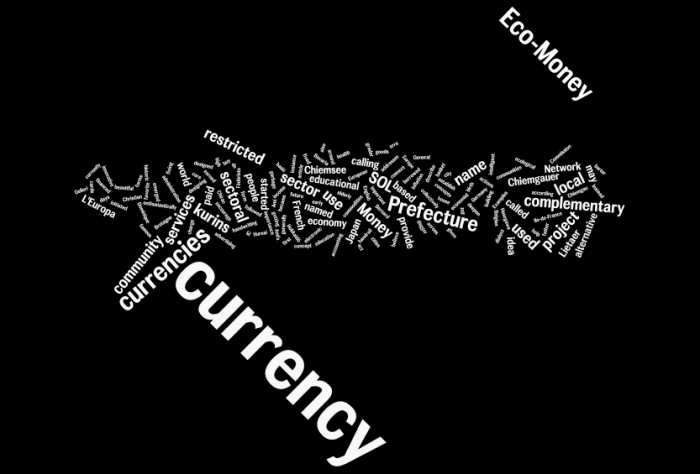
Wordle of five random articles from Wikipedia's 'Community Currencies' page. Made with http://www.wordle.net/.
When five random articles from Wikipedia’s ‘Community Currencies’ pages were wordled together, the word ‘currency’ obviously stood out, with ‘eco-money’ making a surprise leap into the forefront.

Wordle of almost all pages together from Wikipedia's 'Community Currencies' page. Made with http://www.wordle.net.
But when almost all the articles from Wikipedia’s ‘Community Currencies’ pages were wordled together, ‘local’ was the clear winner, with ‘economic’, ‘services’ and ‘people’ starting to become prominent as well.
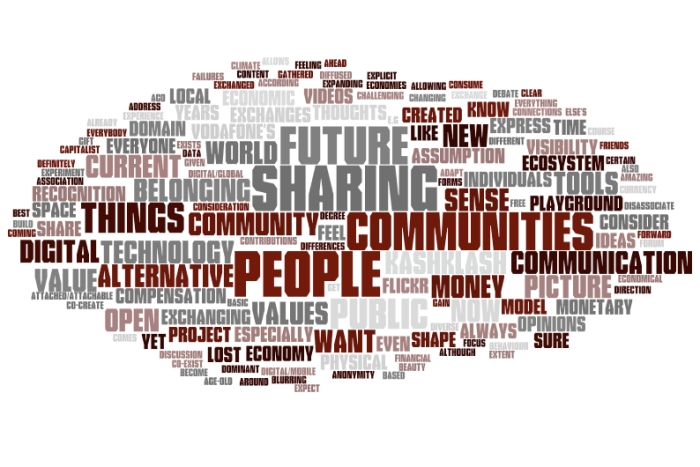
Wordle of text from Kashklash.com's home page. Made with http://www.wordle.net.
Finally, when the text from Kashklash.com’s home page was wordled, the prominent words were even more interesting: ‘sharing’, ‘communities’, ‘people’, ‘future’.
Driven by exercises like these and others, my team began to explore the question about whether communities of practice could be built around sustainability, which could also exchange any ‘wealth’ generated between the individuals in the community.
‘Elevator Buzz’ Concept for Intel
Here’s the presentation for the Elevator Buzz concept that my team worked on for the Intel-CIID industry project. The storyline for the scenario is as follows: three office goers step into the office elevator, as as they arrive at differnt floors on their way up, a visualization inside the elevtor shows the energy efficiency of the floor. The performance of the floor is reflected in the expression of the person who works there, ranging from embarrassment to elation. At the end of the piece, the worker on a floor with low energy efficiency makes a small behavioral change (switches off the light in an unused office space) for the better.
The panels were then drawn up in a neater, crisper scanario to use as context-setting probes for acquiring later user feedback on the concept. The reactions and feedback gathered from users were used to define next steps, setting the agenda for the overall design direction of the project.
Visualizing the Iranian Blogosphere
This Berkman Center for Internet and Society project provides a visualization of the Iranian blogosphere, a very active blog space “of approximately 60,000 routinely updated blogs featuring a rich and varied mix of bloggers” from within and outside Iran. Here is a snapshot of the visualization. The main techniques to mine data was “computational social network mapping in combination with human and automated content analysis.” Studies such as this are helping to create “initial conclusions about the actual impact of technology on democratic events and processes, and to identify questions for further research.”
The size of the dot represents the number of other blogs that link to it, a measure of its popularity. The position of each dot is a function of its links with its neighbors.

Snapshot of "Iran's online public" by the Berkman Center for Internet and Society. Fromhttp://cyber.law.harvard.edu/publications/2008/Mapping_Irans_Online_Public
